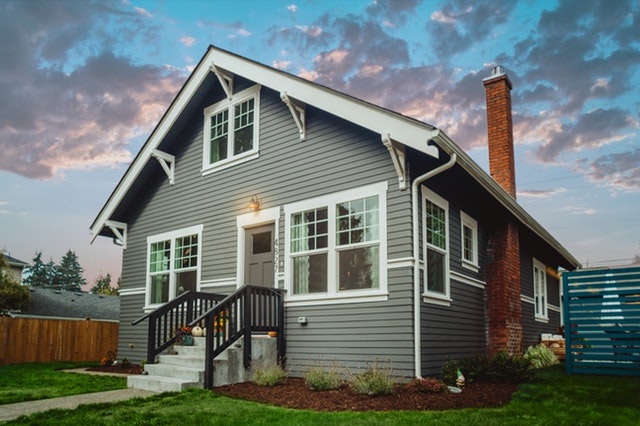 Case-Shiller’s National Home Price Index showed 3.20 percent national home price growth in September, which was 0.10 percent higher than August’s reading of 3.10 percent. The 20-City Home Price Index showed the continued impact of exorbitant home prices on both coasts as home price growth slowed in high-cost areas and smaller markets experienced upward pressure on home prices as home buyers were seeking affordable homes.
Case-Shiller’s National Home Price Index showed 3.20 percent national home price growth in September, which was 0.10 percent higher than August’s reading of 3.10 percent. The 20-City Home Price Index showed the continued impact of exorbitant home prices on both coasts as home price growth slowed in high-cost areas and smaller markets experienced upward pressure on home prices as home buyers were seeking affordable homes.
Phoenix, Arizona led the 20-City Home Price Index with 6.00 percent year-over-year growth in September. Charlotte, North Caroline had 4.60 percent growth in home prices and Tampa, Florida rounded out the three cities with highest year-over-year home price growth with 4.50 percent growth. The 20-City Home Price Index has documented migration of home buyers away from prime metro areas to interior and southern states. Analysts said that lower mortgage rates helped affordability in some cases, but home price growth outpaced stagnant wage growth and inflation.
FHFA Data Shows Home Buyers Leaving High Priced Areas
Federal Housing Finance Agency reporting for the third quarter of 2019 supported Case-Shiller’s trends. Home prices in mid-sized cities are rising as buyers relocate to areas where home prices are accessible to moderate-income buyers. FHFA reported year-over-year price growth for homes owned or financed by Fannie Mae and Freddie Mac slipped to 4.90 percent. This was the first time home price growth dipped below 5.00 percent growth since 2015.
FHFA reported home prices in Boise, Idaho grew by 11.10 percent year-over-year; home prices in Tucson, Arizona grew by 10.30 percent year-over-year in the third quarter. Lynn Fisher, a senior economic advisor for FHFA, said that home price growth rates in California and New York were lower than the national average.
The top three states with the largest year-over-year home price growth rates in the FHFA 20-City HPI were Idaho with 11.60 percent; Maine and Arizona tied with Utah with 7.90 percent home price growth. States with the lowest rates of home price growth were Illinois with 1.90 percent year-over-year growth, Connecticut reported 2.20 percent home price growth and Maryland home prices rose by 2.40 percent. FHFA reported that home prices have risen for 33 consecutive quarters; this is good news for homeowners, but also creates affordability challenges for would-be buyers facing high home prices and strict mortgage qualification standards.
Be sure to consult with your trusted Realtor and home mortgage professionals regarding your real estate concerns and transactions.
 Case-Shiller’s National Home Price Index reported U.S. home prices grew by 3.20 percent year-over-year in July; as compared to year-over-year home price growth 0f 3.00 percent posted in June. Cities with the highest rates of year-over-year home price growth were Phoenix, Arizona with 5.80 percent year-over-year home price growth. Las Vegas, Nevada had 4.70 percent year-over-year home price appreciation and Charlotte, North Caroline bumped Tampa, Florida from the top three cities with home price appreciation of 4.60 percent. Tampa, Florida posted 4.50 percent year-over-year home price growth in July.
Case-Shiller’s National Home Price Index reported U.S. home prices grew by 3.20 percent year-over-year in July; as compared to year-over-year home price growth 0f 3.00 percent posted in June. Cities with the highest rates of year-over-year home price growth were Phoenix, Arizona with 5.80 percent year-over-year home price growth. Las Vegas, Nevada had 4.70 percent year-over-year home price appreciation and Charlotte, North Caroline bumped Tampa, Florida from the top three cities with home price appreciation of 4.60 percent. Tampa, Florida posted 4.50 percent year-over-year home price growth in July. The National Association of Home Builders Housing Market Index shows steady builder confidence in housing market conditions. September’s index reading of 68 was one point higher than August’s reading. Any reading over 50 indicates that most home builders surveyed view housing market conditions as favorable. August’s original index reading was adjusted upward by one point.
The National Association of Home Builders Housing Market Index shows steady builder confidence in housing market conditions. September’s index reading of 68 was one point higher than August’s reading. Any reading over 50 indicates that most home builders surveyed view housing market conditions as favorable. August’s original index reading was adjusted upward by one point. Don’t panic, a looming recession may be good news for those wanting to sell their homes. The experts say this recession may happen in 2020, so there is still plenty of time to make plans for how to deal with a potential economic downturn.
Don’t panic, a looming recession may be good news for those wanting to sell their homes. The experts say this recession may happen in 2020, so there is still plenty of time to make plans for how to deal with a potential economic downturn. Home price growth slowed again in May according to Case-Shiller home price indices. Home price growth slowed for the 14th consecutive month to its lowest rate in 12 years. Case-Shiller’s National Home Price Index showed 3.40 percent growth year-over-year in May as compared to April’s year-over-year reading of 3.50 percent.
Home price growth slowed again in May according to Case-Shiller home price indices. Home price growth slowed for the 14th consecutive month to its lowest rate in 12 years. Case-Shiller’s National Home Price Index showed 3.40 percent growth year-over-year in May as compared to April’s year-over-year reading of 3.50 percent. The federal government adopted the Housing and Community Development Act in 1977, and the Community Reinvestment Act (CRA) portion was designed to prompt lending institutions to provide mortgages for low- and moderate-income Americans. The underlying reasoning for the CRA was to discourage discriminatory lending practices that inhibited low-income communities and neighborhoods.
The federal government adopted the Housing and Community Development Act in 1977, and the Community Reinvestment Act (CRA) portion was designed to prompt lending institutions to provide mortgages for low- and moderate-income Americans. The underlying reasoning for the CRA was to discourage discriminatory lending practices that inhibited low-income communities and neighborhoods.